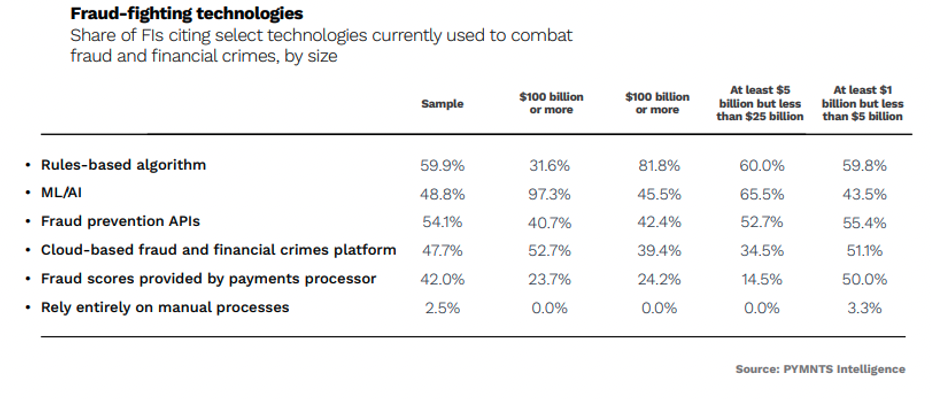
For banks, artificial intelligence is both foe and friend in the eternal battle against fraud.
Foe because the bad actors are harnessing advanced technologies to forge new paths toward scamming financial institutions and their customers. Now, synthetic IDs, especially, are proving to be popular attack vectors and harder to guard against.
Friend, because, as the adage goes, one can fight fire with fire. Banks can use AI, too, to detect and thwart fraud, often in real time.
As joint research from PYMNTS Intelligence and Hawk AI revealed in the report “The State of Fraud and Financial Crime in the U.S.,” headed into the end of 2023, 43% of FIs have experienced increased fraud as compared to 2022. The average cost of fraud for FIs with assets of $5 billion or more also increased by 65%, from $2.3 million in 2022 to $3.8 million in 2023.
AI enables scammers to essentially cobble together identities — as customers, vendors, friends and family members through voice, text and collecting data online — to defraud banking clients and the FIs themselves. Images and audio only augment the scams, where a call or text can fake distress to lure victims into sending details or payments. Scouring the internet for these disparate data points is now easier than ever, phishing messages can be deployed at scale, and the fact that so much of daily life has pivoted to online channels makes it easier to, as they say, hit and run.
As businesses continue to lean more heavily on their use of digital B2B channels, especially ones for payments, the recurring dual narrative of convenience and vulnerability highlights a challenge of digital transformation: navigating innovation while mitigating potentially costly risk.
Other data points reinforce the pervasiveness of fraud. The FBI reported that business email compromise scams represented about $50 billion in losses from 2013 to 2022 on a global scale. In the U.S. alone, that tally comes to $17 billion during the same time frame.
PYMNTS Intelligence found that as many as 12% of fraudulent transactions come from scams in which the criminals impersonate bank tech support personnel. Another common method is to impersonate officials at the IRS. As PYMNTS referenced in a separate report, 47% of retail banking consumers under the age of 40 experienced some form of banking fraud this year.

On the other side of the equation, PYMNTS Intelligence and Hawk AI found that advanced machine learning and AI technologies can help build robust defenses against schemes. These high-tech tools can identify anomalies in authorized user profiles and block bad actors before they even reach their targets. Fifty-six percent of FIs with more than $5 million in assets reported plans to initiate or increase their use of ML and AI to improve existing fraud solutions. That’s a jump from the 36% seen a year ago.
For all PYMNTS AI coverage, subscribe to the daily AI Newsletter.